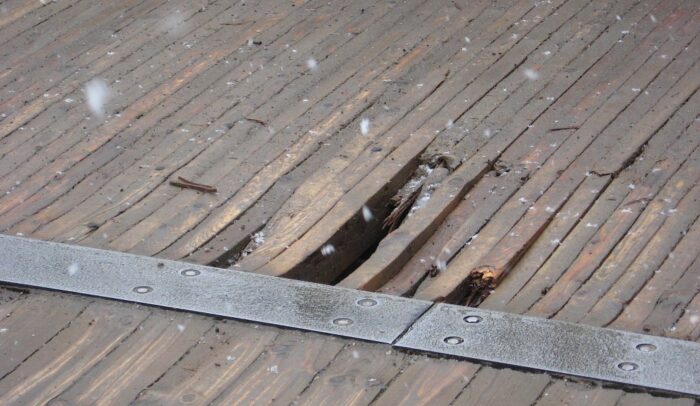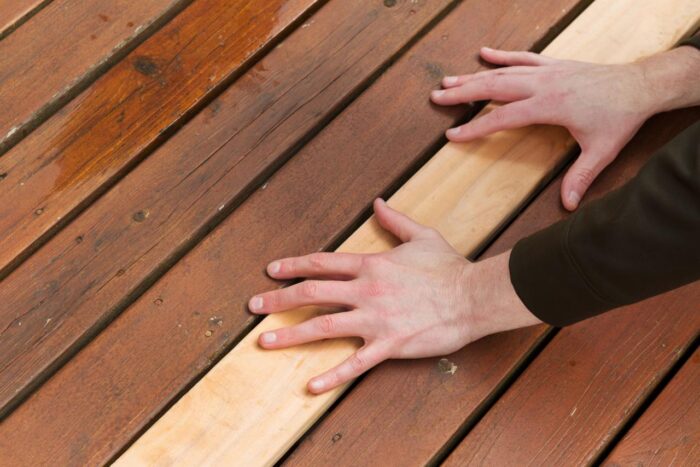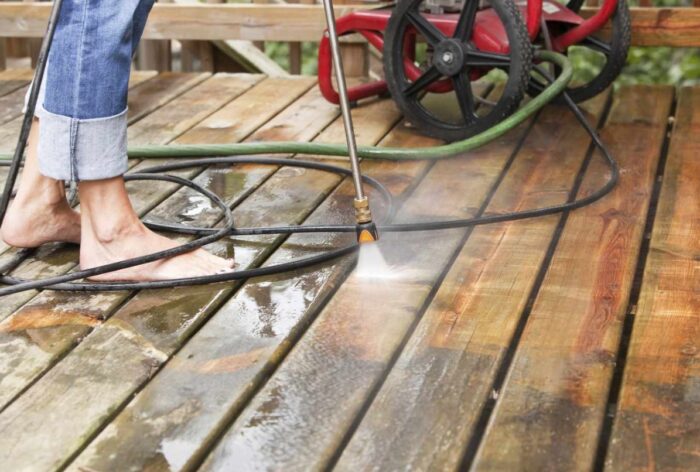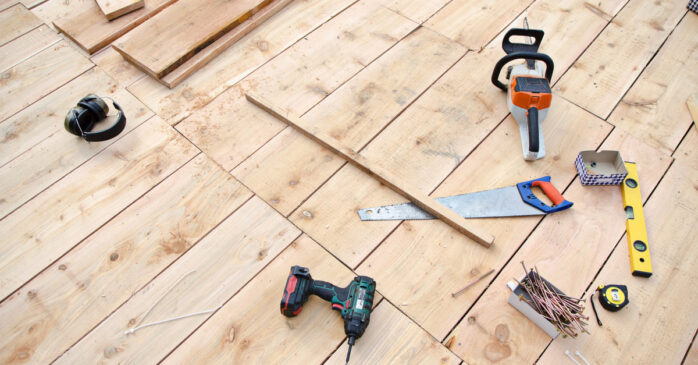
If you own a house, then chances are you have a deck or patio. But did you know that decks can deteriorate over time and can become unsafe for people to walk on? This is why it’s important to inspect it regularly and be aware of the signs that it could be unsafe.
Knowing when your deck needs replacement is key to being able to get the best use out of it while keeping everyone safe.
Signs of an Unsafe Deck
A deck can be a great addition to a home, providing a great outdoor space for entertaining guests and family. But if it is unsafe, it can be a hazard to you and your loved ones.
Knowing the major signs of an unsafe deck is important so you can recognize when it’s time to replace it.
Cracks and Splinters
Cracks or splinters are a sign that your deck has extensive damage and may be unsafe.
Even one single large crack may have caused the rest of the wood in the construction to weaken, making it prone to additional splintering. If you notice small cracks or large splintering of any kind, it’s time to take a closer look at your deck and decide if replacement is necessary.
Rotting or Warping
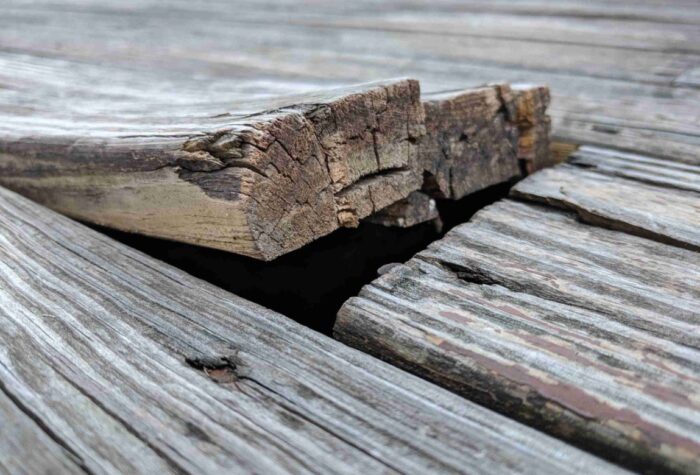
Rotting, often caused by standing water, can weaken the surface of the wood and can easily lead to accidents if its instability causes a person to trip or collapse when used.
Warping occurs when there is excessive heat, humidity, or water on the surface, leading it to become misshapen and ultimately unsafe. It’s important to check it regularly to make sure it isn’t showing any signs of rot or warping so you can take steps to correct any damage before anyone gets hurt.
If you find that your outdoor flooring is beginning to rot or warp, repair it as soon as possible. In some cases, you may need to entirely replace the boards; in other cases, you may be able to sand down the troubled area and repair it with epoxy putty. If repairing isn’t an option, then replacing your boards should be done immediately in order to ensure maximum safety.
In addition, take measures such as painting the wood with impenetrable sealers which create a layer between the weather elements and your deck surface, and make sure that standing water has been addressed on the surfaces of both sides of your boards in order for them not only look great but remain structurally sound for many years of outdoor enjoyment.
Loose Connections
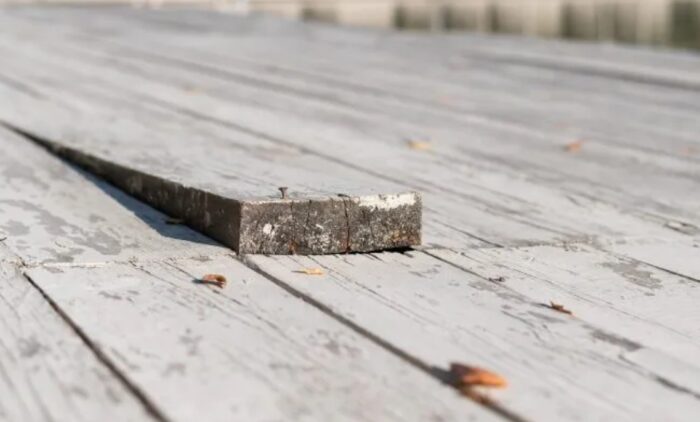
When inspecting a deck for signs of danger, one of the most obvious —and potentially dangerous— indications are loose or missing fasteners and/or hardware.
Boards should be attached securely with fasteners that are appropriate for the material and weather conditions. If a deck is built with nails instead of screws, it should be countersunk and galvanized to prevent rusting.
If you have composite boards, check to make sure they are firmly secured in place using composite compatible screws. The manufacturer’s instructions often recommend drilling pilot holes first in order to allow the screw head to seat properly into the board. The hardware should also be stainless steel or galvanized to adequately resist corrosion over time.
Check all connection points such as between floor joists, post-to-joist hangers, stair risers and treads, deck board attachments, railing posts, and guardrail attachments for signs of loose or rusty hardware — if any are found this could indicate a serious safety hazard.
The structure should also be securely attached to your house with appropriate brackets that extend at least 6” down through the substructure framing of your home’s foundation.
Benefits of Replacing Your Deck
Replacing a wooden deck can bring several benefits including:
-Increased safety. According to Soto Bay Construction, older decks may not be up to current safety codes, which reduces their structural integrity and poses an increased risk for injury or damage in the event of any wear or tear. Replacing it ensures that it meets these codes, giving you peace of mind that you’re protected from harm and possible legal action.
-Improved aesthetics. An old and worn-out deck can drag down the entire look of your backyard landscaping. On the other hand, restoring or replacing it with modern materials can give your outdoor space a facelift — with an assortment of colors, textures, and finishes available to choose from!
-Better resale value. It’s one of the most cost-effective renovations you can make! A contemporary-looking outdoor area is important in today’s real estate market as potential buyers want outdoor spaces they can enjoy without much maintenance or effort required on their part.
Regular Cleaning
Basic cleaning with water should be done regularly to wash away dirt, pollen, leaves, and other debris that can accumulate on the deck. To get a deeper clean from time to time, use a mild soap or cleaner that is designed for outdoor use.
For tougher stains, such as mold or mildew buildup, use a cleaner specifically designed to address those issues. After any kind of cleaning solution or chemical treatment is used on your deck, be sure to rinse the area with clean water afterward.
Lubrication
Keeping fasteners well lubricated with products specifically made for outdoor use will help reduce movement over time which can lead toward the weakening of both screws and more importantly connection points on beams and joists that are vital structural components of your new deck.
Apply thread lockers were instructed by manufacturer guidelines when installing hardware onto wood components during the initial construction process. Taking this extra step at installation will seal up these areas from moisture getting into connection components making them stronger and longer.
Conclusion
In conclusion, the safety and aesthetics of a deck are essential for keeping your family and property safe. Not only does an unsafe deck affect the value of your home, but it can also be a major liability for anyone who might injure themselves as a result.
It is important to inspect your deck on a regular basis to ensure it is structurally sound enough to support all that nature brings in the form of activities and people.
If you notice any abnormalities with your deck’s structure or condition, replace it rather than attempt to repair it. Taking precautionary measures such as these keep you and your family safe while enjoying all that your outdoor living area has to offer.

